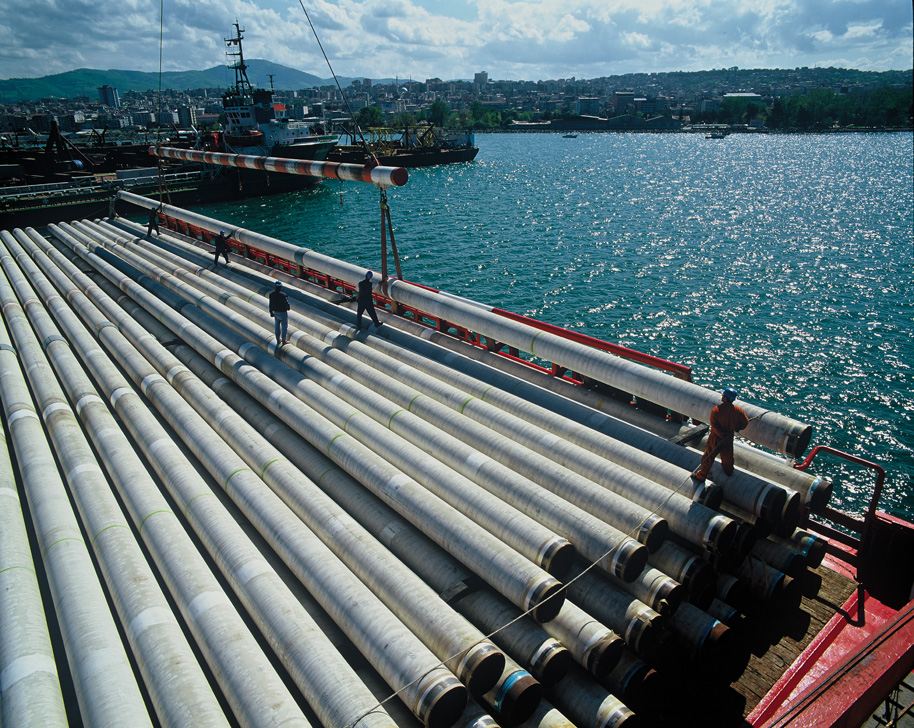The project
Blue Stream was a testing ground for both Saipem and the industry. At the time, working at a depth of nearly 2,200 meters had never been done before. Blue Stream, a gas transport system consisting of twin 24” diameter pipelines about 380 km long each, crossing the Black Sea from Russia to Turkey, at a maximum water depth of nearly 2,200 meters, can be considered the most challenging deep-water pipeline ever completed at that time due to the combination of water depth and diameter.
An extraordinary project
Extensive engineering was done on both pipelines to route and mitigate the challenging environmental geohazards of the seabed on both the Turkish and Russian sides. These challenges, along with unfavourable weather, made the project a milestone for the entire industry. Additionally, due to the height limitations on vessels passing through the Bosphorus, the A-Frames and telecommunications structures of the Saipem 7000 had to be temporarily lowered for passage under the bridge. The channel was closed to commercial ships as the Saipem 7000 crossed, assisted by two tugboats. Passage was a success, with just 5 m of clearance from the bridges. The deep-water sections were installed by the vessel Saipem 7000 using the J-lay method, while the shallow water sections, up to 380 meters, were installed by Castoro Otto with the conventional S-lay method.
